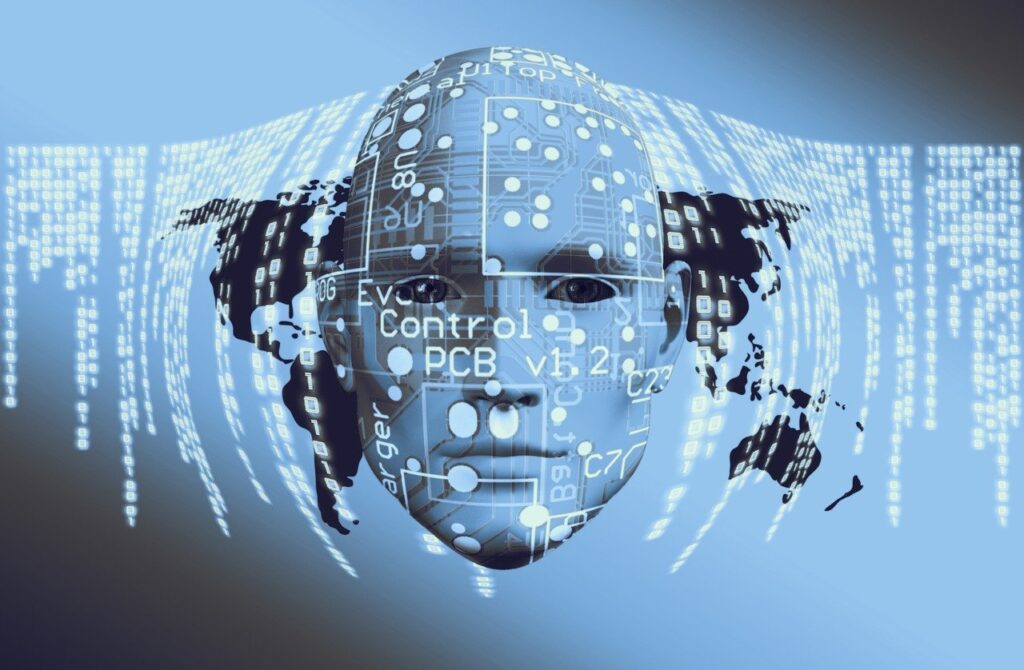In our increasingly digital world, where information and data are vital assets, the role of artificial intelligence (AI) in cybersecurity has become more important than ever. AI is a double-edged sword in this realm, offering both enhanced security measures and posing potential threats when harnessed by malicious actors. This article explores the complex relationship between AI and cybersecurity, addressing the question: Is AI a friend or foe against hacking?

AI as a Friend:
1. Threat Detection and Prevention:
One of the most significant advantages of AI in cybersecurity is its ability to detect and prevent threats effectively. AI-powered systems can analyze enormous amounts of data in real time, allowing them to identify unusual patterns and anomalies that may indicate a cyberattack. This early detection can thwart potential threats before they escalate.
2. Behavioral Analysis:
AI systems can learn the typical behavior of users and networks. By recognizing what “normal” looks like, they can swiftly spot deviations from this norm, which may signify a security breach. This proactive approach to identifying threats is a valuable asset in cybersecurity.
3. Rapid Response:
When a security incident occurs, time is of the essence. AI can automate the response process, allowing for swift reactions to mitigate damage and prevent data breaches. This speed can make all the difference in minimizing the impact of a cyberattack.
4. Predictive Analytics:
AI is adept at predicting potential vulnerabilities and emerging threats based on historical data and trends. By identifying weaknesses before they are exploited, organizations can strengthen their defenses in advance.
5. Vulnerability Assessment:
AI-driven vulnerability scanners can comprehensively assess an organization’s systems and networks, pinpointing areas that require attention. This process is more efficient and accurate than manual assessments, helping organizations maintain a robust security posture.
6. Reduced Human Error:
Cybersecurity relies on human vigilance, but humans can make mistakes. AI can automate routine tasks, such as patch management and system updates, reducing the likelihood of human error compromising security.
AI as a Foe:
While AI offers powerful tools for enhancing cybersecurity, it can also present challenges and dangers:
1. Adversarial Attacks:
Adversarial attacks involve exploiting AI’s own algorithms. Hackers can manipulate AI systems to misclassify data or behave in unintended ways. These adversarial attacks can be used to deceive AI-driven security systems.
2. Privacy Concerns:
The use of AI in cybersecurity often involves analyzing vast amounts of data. This raises concerns about privacy, as sensitive information may be accessed, stored, or even misused. Striking a balance between security and individual privacy is a delicate challenge.
3. Misuse of AI:
The same AI technology that can protect against hacking can be misused by malicious actors. Hackers may use AI to automate their attacks, making them more potent and difficult to defend against.
Ethical Considerations:
When considering the role of AI in cybersecurity, ethical concerns come to the forefront:
1. Responsible AI Use:
The ethical use of AI in both offense and defense is vital. Striking the right balance between harnessing AI’s potential for good and guarding against its misuse is a paramount consideration.
2. Privacy Protection:
AI in cybersecurity should be employed in ways that respect user privacy. Security measures must be designed with privacy safeguards to avoid compromising the rights and confidentiality of individuals.
3. Transparency and Accountability:
Organizations that employ AI in cybersecurity should be transparent about their practices and accountable for their actions. Ensuring that AI is used for ethical purposes and in compliance with regulations is essential.
The Future of AI in Cybersecurity:
AI’s role in cybersecurity will continue to evolve, offering new possibilities and challenges. As AI becomes more sophisticated and adaptable, it will play an increasingly vital role in protecting organizations and individuals against cyber threats.
Collaboration and Vigilance:
The dynamic landscape of cybersecurity requires collaboration between governments, organizations, and cybersecurity experts. Sharing threat intelligence and adopting a unified approach to AI-driven cybersecurity is essential. Vigilance and continuous learning are key to staying ahead of emerging threats.
Conclusion:
AI in cybersecurity is a potent ally in the fight against hacking, with its capacity to detect threats, analyze behavior, and predict vulnerabilities. However, it is not without its challenges and ethical considerations. The responsible use of AI to safeguard privacy and protect individuals and organizations is paramount. As technology evolves, AI will play an increasingly crucial role in cybersecurity, and it is vital for stakeholders to work together to ensure AI remains a friend, not a foe, in the battle against hacking. The future of cybersecurity will undoubtedly be intertwined with the capabilities of AI, making the responsible and ethical use of this technology more critical than ever.